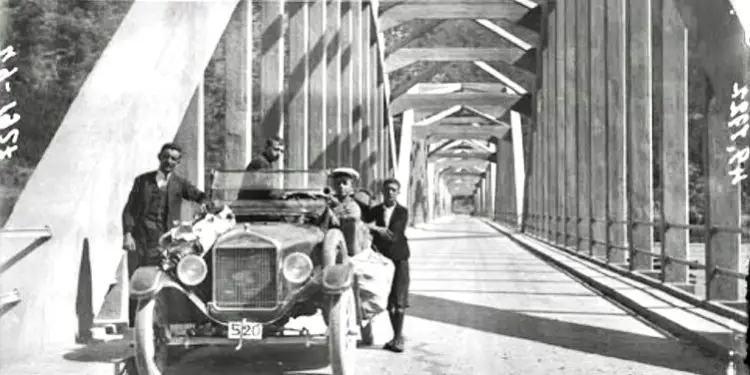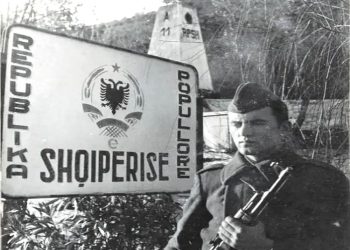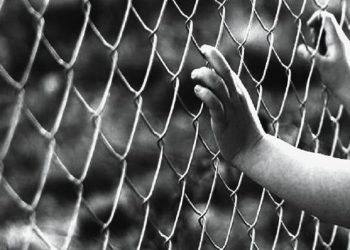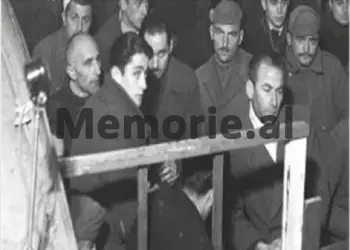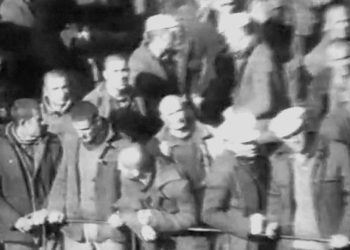By Eduard M. Dilo
-The history of the construction of Matt’s Bridge, one of the most beautiful in the Balkans-
Memorie.al / who has not been impressed by this beautiful bridge built over the Mat River? It was inaugurated on May 26, 1927 and was designed by the then 30-year-old Swiss engineer Erwin Schnitter. Years ago, in 1925, the first project was made by the German engineer Back, taking the wide field as a construction point. The current of January in 1926 showed the ferocity of this current. The bridge is built with six arches, each 54 meters long. Built with cement and iron, in one of the most modern bridge construction systems (for that time), even today, it has not lost its beauty and value.
Matt’s Bridge is one of the most beautiful in the Balkans
According to the newspaper “SHQIPNIJA” with Director Dr. Leonidha Naçi – (Tirana, Tuesday 24/05/1927), deputies, senators and authorities from Shkodra and Lezha participated in its inauguration. And according to the newspaper in question, “it was a solemn inauguration, of the first great work for public benefit that the Ministry of World Affairs (under the leadership of the tireless minister Musa Juka) carried out with its own energetic initiative…”!
“As for the artistic work of this bridge, and for its charm, a description cannot be properly developed, and only those who have the opportunity to see it, remain impressed by a colossal work of art.
“… The undertaking of this building by ‘Mazorana & Co’, represented by its own executive engineer, Mr. Erwin Schnitter, with great zeal and skill within one year, completed the work exactly on the basis of the contract, thus gaining the admiration of the sympathy of all those who have had the chance, with these friends the construction is underway”, writes Cirilo Kasana.
This newspaper, saved by the engineer in question, was sent to the Juka family with some notes (memories), which I think have extraordinary value, so I am reproducing them according to the original.
My personal memories, from the years 1925-1928, about Musa Juka, Minister of World Affairs of Albania
“During the year 1924, in Albania, a group of personalities with strong will and equipped with one mind was organized to decide on the survival of their country, which had just won its independence and freedom, from the foreign yoke.
Ahmet Zogu represented this group as chairman. Mr. Musa Juka was appointed Minister of World Affairs. This was a man with extremely great willpower and a clear view of the urgent needs of his country. His views were not only fueled by a rare intelligence, but also by a powerful idealism and unwavering faith in the future of his homeland.
His goal to bring Albania – full of wounds – from the terrible destruction of the war, from the chaos and inertia that followed, and gave him a spirit of courage, activity, and work, begged him to have an extremely great power. , you know that everything would start from nothing.
I, as a young Swiss engineer, graduated from the Polytechnic School of Zurich and, after participating in the construction of several bridges and dams in my country, I had the good fortune to follow – for several years – the beginning of these realizations of Minister of World Affairs, Mr. Musa Juka.
One of the first important projects that they wanted to be realized was the reconstruction of the national road leading from Durrës and Tirana to Shkodër, the most important city of Northern Albania. During the first war, in Zurich, we go to a simple but especially charming and original house.
“This house was built by Lux Guyer, the first woman architect in Switzerland, the sister of a lady who lives nearby, Rosie Schnitter, author, married to Erwin Schnitter, engineer of international fame, Louisa told me.”
Prof. Dr. Safete S. Juka, tells:
“A graceful lady is coming towards me. Warmly shake your hand, they told me: I am Rosie Schnitter, together with my husband, we have spent three years in Albania, and a girl left me there. I have the best memories of your country and especially of the Minister of World Affairs of that time.
My husband, who has done many jobs in different places, says: I have not known anyone more capable, dedicated and honest than this minister. He insisted that the best materials be used, but also that the costs be as small as possible. Every day, early in the morning, before going to the office, he would inspect the works but, especially, talk to the workers. He cared for them, wanted to know their personal problems, to help them. He was modest, humane, with value and a big heart.”
Meanwhile, Mr. Erwin Schnitter also came. He repeated, more or less, what his wife had told me. He spoke with respect and admiration for this Minister of World Affairs, and then added: “In my life, I have never known anyone to be devoted to me. It has been a real inspiration for me, knowing and collaborating with a man like him. I consider this fact as a gift from God. His name is: Musa Juka. Do you know him?”.
Deeply moved, I told him: “I am his daughter”. With tears in our eyes, the three of us hugged. After we calmed down a bit, we talked for a long time, then he told me that he was the builder of Matt’s Bridge and some other works. They lived in Albania from 1925-1928. They immediately invited me to their house; I stayed for a few days. They were not only extremely cultured, but polite, simple and hospitable like us Albanians.
From that time, that is, from 1961, a sweet friendship began between our families which continued until we were in this world. Erwin Schnitter passed away in 1980 and his wife in 1982…! As I said above, Erwin Schnitter, they later told me that Matt’s Bridge was built by him, as an engineer of an Italian company, from Trieste.
The Austrians had built a bridge almost 500/m long, where the river – after passing the last range of mountains – enters the long plain, which stretches to the Adriatic. This was a strong bridge, but unfortunately the Austrians destroyed it completely, when they retreated in 1918. With the land that remained from the bridge, the inhabitants built a raft”.
Also, according to Ms. Dr. Safete S. Juka, we also have these data for Ing. Erwin Schnitter: Graduated from the Polytechnic School of Zurich, as a geometric engineer, he directed important works not only in Switzerland, but also in many countries around the world. Some of his constructions that deserve special mention are two underwater tunnels, one in Holland and the other in Ireland; the port of Dunkirk in France; hydraulic center of battage (dam) in Portugal (Castelo do Bode e Cabril), in Alsace, France, etc.
He took part in the construction of the metropolitan (subway) of Toronto and also left plans for the construction of a metropolitan system for the city of Zurich. His great and important works have made him known not only in Switzerland, but in the international arena. On the other hand, as Fritz Marti writes in a Swiss magazine, the world has lost Erwin Schnitter, not only an outstanding engineer, but also a personality of great global human value.
The Italian army had built a military road Durrës – Tirana, with a branch from the North, where the front that was organized against the Austrian army was located. This army (the Austrian army) had built a military road that crossed Lezha and that begged them to continue across the river Mat, a powerful river with a strong and fast current.
The Austrians chose as a construction site, the point where this river crossed the last mountain, to enter the long plain that stretches to the Mediterranean, and there they built a bridge 500 meters long, with steel legs embedded in a great depth. The road continued south, to the front against the Italian army. When the Austrian army retreated in 1918, the Austrians destroyed all this wonderful work.
After the war, the people who lived in that province installed a raft as a temporary means, using the usable cables and land left by the Austrians. Construction of a bridge over Mati, to serve the main national road from the South to the North of the country, about 60/km. from Tirana. It represented one of the most urgent technical needs. Thanks to the tireless energy of the Minister of World Affairs, Mr. Musa Juka, in the years 1926 and 1927, a reinforced concrete bridge, 500/m long, whose legs were built are embedded in a very great depth.
In January 1926 – during these works – the current of Mati was flooded with a flood of 1200/m3 per second. In the South of Albania – in the important Port of Vlona – in the years 1925-1926, a pier with reinforced concrete was built to load and unload steamers. In the Port of Durrës, a goods warehouse was built in 1927 and after that the National Bank was built.
The studies for an important port in Durrës were followed with the greatest interest, in order to pave the way for an active and successful development. In the spring of 1928, the works and constructions of this port were undertaken with all the necessary energy. (These memoirs were written in French and translated by Prof. Fiqret Juka; I remained faithful to the language used).
We read in the letter (19/6/1970) that he sends to the honorable ladies, Dr. Safete and Prof. Lume, Mr. Erwin, these lines; “Thank you for accepting this information that I am sending you, from a distant past, which is very precious to me…! We always keep the best memories, from your beautiful homeland (country)……”!
We have in our hands a nice writing, from the prominent Albanian erudite Dr. Prof. Safet S. Juka, that chance has brought him to meet and talk with this outstanding engineer. We spent several years in Egypt; more in exile. The Egyptians love us Albanians a lot, especially for the good things that have been done to the Egyptian people, King Mohamed Ali, who has Albanians. People of different nationalities lived in Alexander. There was also a large Swiss colony. There he met Louise and Renxo Alleman, Swiss born in Egypt.
After the fall of the Egyptian Monarchy, they – like many others – left and settled in Zurich, where they had their parents. We maintained our friendship through correspondence. In 1955, my beloved father, Musa Juka, passed away. Two years later, I went to the brothers in New York. Nana continued to live in Aleksandri, together with her sister Lume. Louisa and her husband insisted that I go and spend a few days at their house. My mind was filled in 1961. What joy when we met after so many years…!
It seemed to us as if we had parted a day ago. True friendship is holy. In my honor, they gave a lunch, where they invited many of their friends. (To meet an Albanian, professor of French literature, painter, scientist, researcher, archaeologist, etc. My note E.D.)
Louise’s house was not only large and with a wonderful view over Lake Zurich, but especially charming and original. This house was built by Lux Guyer, the first woman architect in Switzerland, the sister of a lady who lives here next to Rosie Schnitter, author, married to Erwin Schnitter, engineer of international fame,” Louisa told me. /Memorie.al




